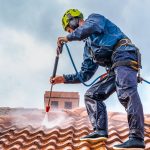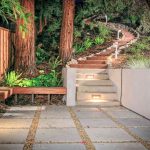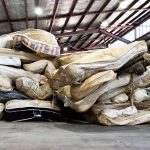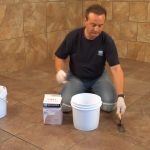Hardwood floors add warmth, character, and timeless appeal to any home. But even the toughest hardwoods don’t last forever without care. Over time, foot traffic, sunlight, spills, and wear start to take their toll. When the shine fades or damage becomes visible, refinishing may be the solution to bring your floors back to life.
Knowing when to refinish—and when it might be too late—can save you money and preserve the integrity of your floors. Reputable experts like Plancher Mebesa often assess these signs to help homeowners restore their flooring’s original beauty and strength.
1. Surface Scratches and Scuffs Everywhere
Scratches are inevitable with pets, shoes, and furniture movement. A few isolated scratches can often be touched up, but when they cover large areas:
- They dull the surface appearance
- They collect dirt and moisture, worsening over time
- They make cleaning difficult and unsatisfying
Refinishing sands away these scratches and reseals the wood with a protective finish.
2. Discoloration and Fading
Natural sunlight can bleach hardwood over time, leaving some areas lighter than others. Meanwhile, water stains or chemical spills can leave dark patches. When you see:
- Uneven coloration from UV exposure
- Gray or black stains from water damage
- Spots that no longer match the surrounding floor
…it’s time for a fresh sanding and re-stain to restore uniform color and tone.
3. Loss of Shine and Finish
If your floor no longer reflects light or feels dull underfoot, the protective finish may be worn off. This leaves the wood vulnerable to:
- Moisture penetration
- Stains from spills
- Increased surface damage from everyday use
Refinishing replaces this worn-out topcoat with a fresh layer of sealant or stain, restoring luster and protection.
4. Splinters or Rough Patches
Smoothness is one of hardwood’s most desirable traits. But over time, planks may develop:
- Raised edges
- Splintering grain
- Small gouges or rough spots
These aren’t just unsightly—they can be hazardous. Refinishing smooths the surface, improving both safety and appearance.
5. Floorboards That Look Gray or Dull
When wood turns gray, it’s usually a sign that the protective seal has worn away completely. The wood is now absorbing moisture from:
- Humidity
- Cleaning products
- Spills
If left untreated, this can lead to mold, warping, or even rot. Refinishing helps prevent these deeper issues by sealing out moisture again.
6. Deep Stains or Pet Damage
Pets can be tough on hardwood. Urine, claws, and muddy paws often leave behind:
- Deep scratches
- Strong-smelling stains
- Dark, embedded marks
If a quick clean won’t fix the issue and the damage has sunk beneath the surface, refinishing might be your best option.
7. It’s Been Over 7–10 Years
Even if your floor still looks decent, routine refinishing is recommended every 7 to 10 years for high-traffic areas. This proactive care:
- Prevents deeper damage
- Maintains floor value and appearance
- Extends the lifespan of your hardwood
Regular maintenance reduces the need for more costly repairs down the road.
Conclusion
Refinishing hardwood floors isn’t just about aesthetics—it’s a protective measure that preserves the durability and longevity of your investment. When scratches, stains, fading, or wear become too obvious to ignore, it’s time to call in the experts.

 How a General Contractor Manages Large Renovation Projects
How a General Contractor Manages Large Renovation Projects  Why Ongoing Support Is More Valuable Than a Low Initial Price When Installing Stairlifts In Scotland?
Why Ongoing Support Is More Valuable Than a Low Initial Price When Installing Stairlifts In Scotland?  How To Repair The Roof Penetration That Causes Vent Pipe Leaks
How To Repair The Roof Penetration That Causes Vent Pipe Leaks  Transform Your San Francisco Outdoor Space with Expert Paver Installation
Transform Your San Francisco Outdoor Space with Expert Paver Installation  What Materials Are Recovered in Mattress Recycling?
What Materials Are Recovered in Mattress Recycling?  DSCR Loans Explained: Debt Service Coverage Ratio Made Simple
DSCR Loans Explained: Debt Service Coverage Ratio Made Simple  Where to Buy Laticrete Spectralock Pro Grout?
Where to Buy Laticrete Spectralock Pro Grout?  The Bathroom Renovation Secrets Kitchener-Waterloo Homeowners Should Know
The Bathroom Renovation Secrets Kitchener-Waterloo Homeowners Should Know 